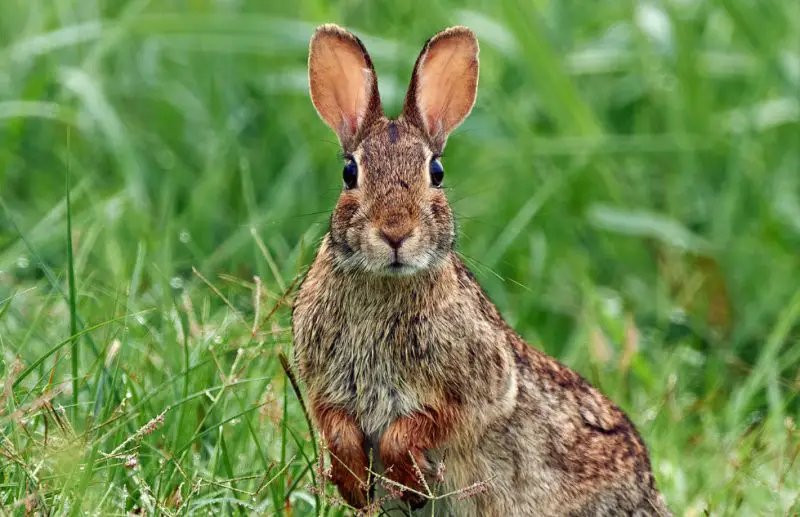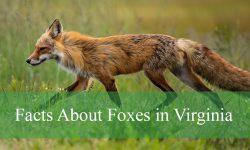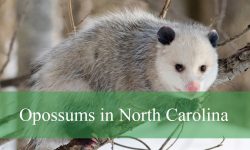As dawn breaks over Kansas’s wide prairies, the golden light reveals quiet movement among the tall grasses. A pair of long ears rise cautiously above the dew-covered field, twitching at the faintest rustle. Then, with a sudden burst of speed, the small brown form darts through the pasture and vanishes beneath the cover of sunflowers. These are the rabbits in Kansas — swift, watchful, and far more complex than their gentle reputation suggests.
From the rolling Flint Hills to the Great Plains, rabbits have shaped Kansas’s landscapes and food webs for centuries. Often seen as symbols of fertility or garden pests, they are, in reality, key players in maintaining ecological balance. Their lives are filled with strategy, survival, and surprising intelligence.
In this detailed look at the rabbits of Kansas fields, we’ll explore their species, behaviors, diets, breeding habits, and ecological importance — revealing the hidden truth behind these familiar field dwellers.
Rabbits of the Kansas Fields

Common Species in Kansas
Two species of wild rabbits dominate the fields of Kansas: the Eastern cottontail (Sylvilagus floridanus) and the black-tailed jackrabbit (Lepus californicus). Though both are often lumped together as “rabbits,” they belong to slightly different groups — cottontails are true rabbits, while jackrabbits are technically hares.
The Eastern cottontail rabbit is small and compact, with a reddish-brown coat, a white belly, and the trademark white “cotton ball” tail. It thrives across Kansas in grasslands, wooded edges, and even suburban gardens.
The black-tailed jackrabbit, by contrast, is larger and leaner, with long black-tipped ears and powerful hind legs built for open terrain. Found mainly in western Kansas, it prefers prairies and agricultural fields where it can spot predators from afar and escape with bursts of incredible speed — up to 40 miles per hour.
Adaptable and Abundant
What makes rabbits in Kansas so successful is their adaptability. They occupy nearly every habitat in the state, from river valleys and meadows to farms and city outskirts. They feed on diverse plant life and reproduce rapidly, ensuring population recovery even after harsh winters or predator-heavy seasons.
This resilience allows them to persist despite droughts, wildfires, and human encroachment — a living emblem of Kansas’s grassland endurance.
Life in the Fields
Habitats and Hideouts
Rabbits prefer edge habitats — areas where open fields meet shrubs or thickets, offering both food and shelter. In Kansas, hedgerows, fence lines, and overgrown ditches create ideal cover. The dense vegetation conceals them from hawks, foxes, and coyotes while providing an endless buffet of grasses, clover, and wildflowers.
Cottontails build forms, shallow depressions in grass or soil lined with fur, for resting and nesting. Jackrabbits, on the other hand, rely on speed and keen vision rather than cover, using their long ears as both cooling systems and listening devices in the open prairie wind.
These small sanctuaries — simple yet strategic — are crucial to their daily survival in Kansas’s unpredictable climate.
The Rhythm of the Plains
Rabbits are crepuscular, meaning they’re most active during dawn and dusk when temperatures are cooler and predators are less alert. As twilight paints the sky, the fields come alive with quiet rustles — rabbits feeding, grooming, or cautiously venturing from their hiding spots.
Their nocturnal movements also serve a purpose: avoiding the blazing midday sun of Kansas summers while feeding on dew-covered plants that provide both food and moisture. The prairie’s rhythm and the rabbit’s behavior are perfectly synchronized.
Diet: The Grassland Gourmets
A Vegetarian’s Feast
The rabbits of Kansas are herbivores with finely tuned diets that change with the seasons. In spring and summer, they feast on grasses, clover, alfalfa, and tender shoots. In autumn, their menu expands to include wildflowers, bark, twigs, and agricultural crops like soybeans or wheat.
During harsh winters, when greenery fades, they rely on woody plants — gnawing bark and twigs from shrubs like sumac and willow. Their constantly growing incisors are perfectly adapted for grinding fibrous vegetation year-round.
This constant grazing not only sustains the rabbits but also shapes plant communities, influencing which species dominate Kansas grasslands each season.
Ecological Gardeners
Though often blamed for crop nibbling, rabbits in Kansas play a vital ecological role. By trimming vegetation and dispersing seeds through droppings, they help maintain healthy prairies and meadows. Their selective feeding encourages plant diversity and prevents certain grasses from overrunning others.
In essence, they act as natural gardeners, pruning the land with precision shaped by millennia of evolution.
The Art of Survival
Eyes on Every Horizon
Life in the open fields is fraught with danger. Rabbits are prey for nearly every predator in Kansas — hawks, owls, foxes, coyotes, bobcats, and snakes. To survive, they rely on keen senses and reflexes honed by constant vigilance.
Their large eyes, positioned on the sides of their heads, offer nearly 360-degree vision, allowing them to detect movement in all directions. Their ears can swivel independently, picking up even the faintest rustle of grass.
Yet their most impressive defense is speed. A startled rabbit can zigzag across the field in bursts of 30 to 40 miles per hour, confusing predators and disappearing into cover.
Camouflage and Stillness
When fleeing isn’t an option, rabbits use stillness as their shield. Their mottled brown fur blends perfectly with dry prairie grasses, rendering them almost invisible to predators. By pressing flat against the earth and slowing their heartbeat, they can remain undetected even as danger passes inches away.
This instinctive mastery of camouflage often saves their lives — a delicate balance between motion and invisibility in the Kansas fields.
Breeding and Family Life
Nature’s Reproductive Marvels
Rabbits are famous for their fertility, and rabbits in Kansas live up to that reputation. Breeding begins as early as February and can continue into late autumn, with females capable of producing three to seven litters per year.
Each litter contains three to eight kits born blind and helpless, hidden in grassy nests lined with the mother’s fur. The doe visits her young only once or twice daily to nurse, minimizing scent trails that could attract predators.
After just three weeks, the kits venture out on their own, already capable of feeding and fending for themselves. By two months, they’re ready to reproduce — a strategy that ensures survival despite high predation.
The Cycle of Renewal
This high reproduction rate supports the delicate balance of Kansas ecosystems. Rabbits sustain countless predators, from red-tailed hawks to coyotes, forming the backbone of the food web. Without them, many carnivores would struggle to survive.
Their short lives — typically only one to two years — are balanced by prolific birth rates, ensuring that the fields remain alive with movement and energy year after year.
Rabbits and the Kansas Ecosystem
The Keystone of the Prairie
Few species influence the Kansas landscape like the cottontail rabbit. As prey, grazers, and seed dispersers, they maintain grassland structure and biodiversity. Their droppings enrich the soil with nutrients, aiding plant regrowth and supporting insects that, in turn, feed birds and reptiles.
Without rabbits, Kansas’s prairies would lose an essential link — one that connects the smallest grasses to the largest predators in an endless chain of life.
Predators and Prey in Harmony
Predation may seem cruel, but it’s the mechanism that keeps ecosystems in balance. Rabbits’ high reproductive rates match the hunting pressures of foxes, owls, and coyotes. When rabbit populations surge after mild winters, predators thrive. When they dip during droughts, nature self-corrects.
This rhythmic rise and fall — the heartbeat of the prairie — ensures that neither prey nor predator dominates, maintaining the equilibrium that defines Kansas’s wild lands.
The Changing Landscape of Kansas Fields
Agriculture and Adaptation
Modern agriculture has reshaped much of Kansas’s natural prairie, but rabbits in Kansas have adapted remarkably well. They use field edges, fencerows, and irrigation ditches as travel corridors, feeding on leftover crops and native weeds along the margins.
While intensive farming reduces cover, conservation efforts such as buffer strips and prairie restorations help maintain habitats where rabbits — and countless other species — can coexist with agriculture.
Urban Expansion and Backyard Wildlife
As towns expand, rabbits have become common in suburban lawns and gardens. Here, they feed on ornamental plants, prompting frustration among homeowners. Yet their presence is a sign of ecological resilience — wild animals adapting to human-altered environments with ingenuity and grace.
Simple coexistence strategies, such as fencing gardens or planting less palatable species, allow people to enjoy wildlife without conflict. These small compromises ensure that Kansas remains a place where wild and human worlds overlap.
Myths and Misunderstandings About Rabbits
Not Just “Cute” or “Pests”
For generations, rabbits in Kansas have been viewed through two extremes: beloved woodland icons or garden nuisances. The truth lies between. They are intelligent, social creatures that play critical roles in ecosystems — neither harmless nor harmful by nature, but essential.
Their behaviors, from grooming to communication through thumps and scent, reveal social complexity that few appreciate. Their nervous systems are finely tuned for survival, not mischief.
Disease and Safety Concerns
Occasionally, concerns arise about rabbits carrying diseases like tularemia. While rare, the risk is minimal with proper hygiene. Opossums, squirrels, and raccoons pose similar or higher risks, yet coexist safely with humans statewide.
Wild rabbits should never be handled, especially young ones that may appear abandoned. Mothers often leave their young hidden during the day, returning only to feed them. Interference can do more harm than good.
Seasonal Lives of Kansas Rabbits
Spring: Renewal and Nesting
Spring transforms Kansas fields into nurseries. The first warm days trigger breeding, and does begin constructing nests in grassy cover. Fresh shoots and clover abound, and young rabbits emerge to explore the vibrant new growth.
Predators are equally active, balancing the population as the plains come alive with movement and song.
Summer: Growth and Abundance
By summer, the fields hum with activity. Rabbits feed heavily at dawn and dusk, often seen along field edges and dirt roads. Their coats lighten, blending with sun-bleached grass. As temperatures rise, they seek shade beneath weeds and hedgerows, conserving water and energy.
It’s a season of plenty — the peak of life before the harsh changes of fall and winter.
Autumn and Winter: Survival in the Cold
When frost blankets the land, rabbits in Kansas adapt once more. They rely on shrubs, bark, and remaining vegetation for food, sometimes venturing into barns or brush piles for shelter.
Their dense winter fur insulates them against cold winds sweeping across the plains. Snow reveals their tracks — small, paired prints tracing graceful loops through the still landscape, a reminder that even in winter’s quiet, life endures beneath the Kansas sky.
Surprising and Little-Known Facts About Rabbits in Kansas
-
A rabbit’s heart beats up to 200 times per minute, especially when startled.
-
They can jump over three feet high and up to ten feet forward in a single leap.
-
A mother cottontail visits her nest only twice a day to avoid attracting predators.
-
Rabbits re-ingest soft droppings to absorb nutrients missed during digestion.
-
Their vision covers nearly 360 degrees, with a small blind spot in front.
-
Rabbits can detect danger through ground vibrations.
-
Jackrabbits use their long ears as heat regulators, releasing excess body warmth.
-
Cottontails shed fur twice yearly to match the seasons.
-
A single pair can produce over 30 offspring in one year.
-
Their populations follow three- to five-year cycles tied to predator numbers and food availability.
FAQs About Rabbits in Kansas
What species of rabbits live in Kansas?
The main species are the Eastern cottontail and the black-tailed jackrabbit, each suited to different habitats.
Are rabbits active all year in Kansas?
Yes. They remain active throughout the year, though activity levels decrease during severe cold or heavy snow.
What do rabbits eat the most?
They primarily eat grasses, clover, weeds, and crops like alfalfa or soybeans, adjusting their diet seasonally.
How do rabbits survive Kansas winters?
By sheltering in thick vegetation, feeding on bark and twigs, and conserving energy through reduced movement.
Are rabbits harmful to gardens?
They can nibble vegetables and flowers, but using fencing and deterrents helps maintain balance without harm.
What predators hunt rabbits in Kansas?
Coyotes, foxes, hawks, owls, and snakes are the main natural predators keeping populations stable.
Do rabbits dig burrows?
Cottontails don’t dig extensive burrows like hares; they use shallow forms or abandoned dens for cover.
Can rabbits transmit diseases to humans?
Rarely. Tularemia is possible but uncommon and preventable with basic hygiene and avoidance of handling wild animals.
How long do wild rabbits live?
Typically 1–2 years due to predation, though they can live longer in protected areas.
Why are rabbits important to Kansas ecosystems?
They sustain predators, shape plant communities, disperse seeds, and enrich the soil — vital roles in prairie health.
Final Thoughts
The rabbits of Kansas fields are more than fleeting shapes in the grass — they are symbols of endurance, balance, and quiet purpose. Through every season, they weave themselves into the rhythms of the plains, linking predator and prey, soil and sky.
Their speed, intelligence, and adaptability have kept them thriving for centuries amid changing landscapes. From farmers’ fields to suburban yards, they continue to remind Kansans that even the smallest creatures play enormous roles in nature’s grand design.
The truth about rabbits in Kansas is not simply that they survive — it’s that they shape the very fields we walk upon, guardians of grass and wind beneath the endless prairie sky.






